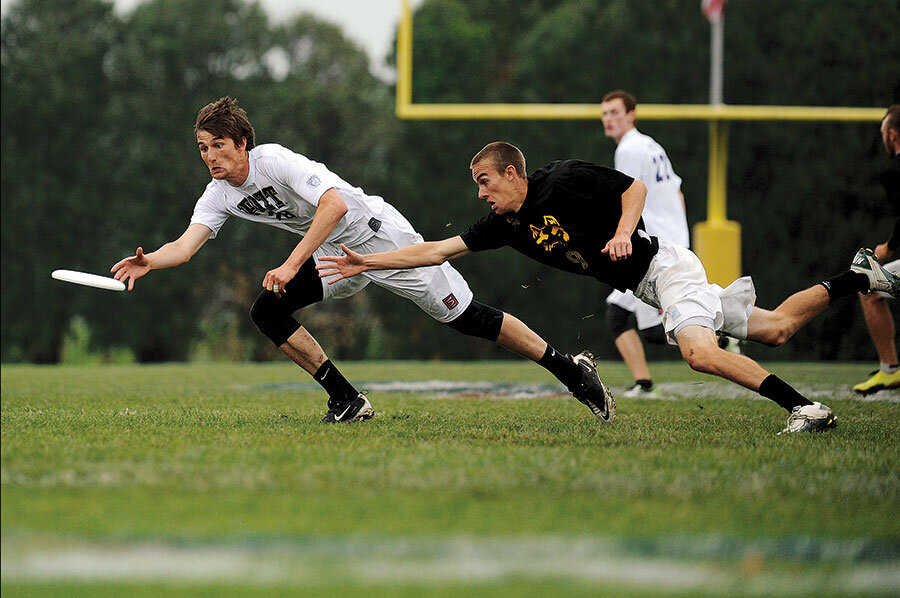Ultimate Frisbee goes pro
Fans let out a collective “ohhhh!” one recent afternoon at a stadium outside Boston as they watched a player on the field speed past an opponent and launch himself into the air. Suspended like Superman for the longest split second, he caught the pass as he fell to the earth in the end zone, scoring the season’s first point. The crowd roared.
If you are partial to watching American football, try subbing out that pigskin for a flying disc and the protective gear for a uniform similar to what a soccer player might wear. This is professional Ultimate Frisbee – and most definitely not the casual barefoot game played by tie-dye-wearing coeds.
In the 45-plus years since its fledgling start with New Jersey high-schoolers, Ultimate has grown to spawn two professional leagues in the United States – the American Ultimate Disc League (AUDL) and the Major League Ultimate (MLU).
More than 5 million men, women, and children in the US currently play the sport, according to recent estimates from the Sports and Fitness Industry Association, about the same level of participation as gymnastics. That includes everything from middle school and post-college clubs to grandmaster leagues.
Ultimate combines the passing and running of soccer, the strategy of football, and the agility of basketball. But it has an inimitable spirit and style all its own, hinging on good sportsmanship, self-refereeing (at the lower levels), and joy of the game.
That spirit is part of what attracts players, and what may be partly responsible for its recent growth among youths. Since 2008, player participation on USA Ultimate- affiliated teams among 13-to-18-year-olds has more than doubled, according to numbers by the governing body. Tom Crawford at USA Ultimate says that demographic is key to continuing to grow the pro league.
The pro leagues, consisting of men’s teams, were introduced during the past two years. The AUDL, founded in 2012, includes 17 teams across three divisions in the US and Canada. The MLU started up in 2013 with eight teams with an Eastern and Western division.
The pro players, who make a small stipend including travel expenses, all have day jobs. But that doesn’t seem to matter. ESPN is starting to broadcast the games online and the games themselves draw modest crowds of about 1,000 fans.
“It’s a really athletic sport,” says Josh McCarthy, who was serving as an announcer at the recent pro game in Boston. “That should really appeal to fans who want to watch great athletes competing as hard as they can.”





